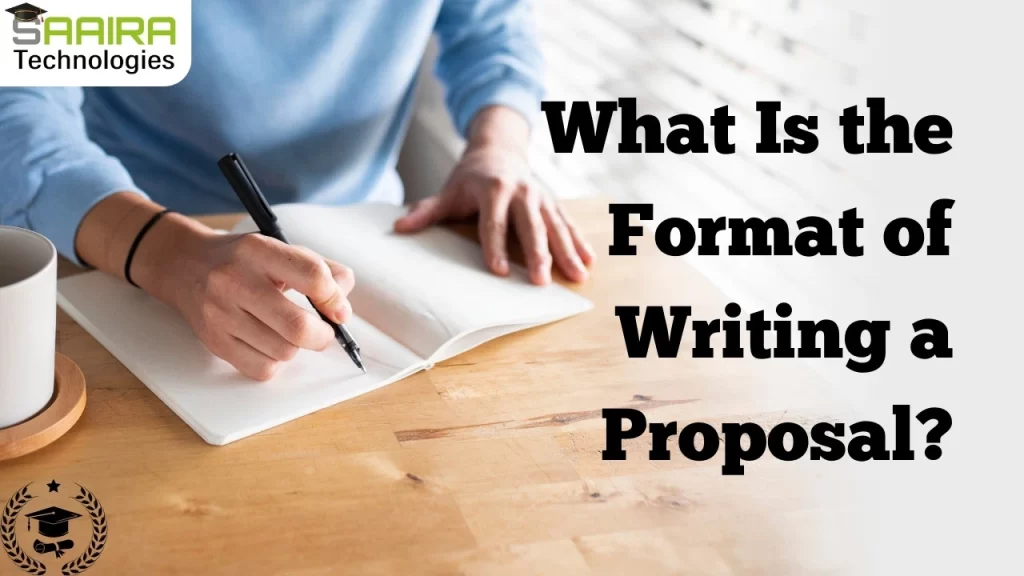What Is the Format of Writing a Proposal?

Creating a professional proposal is a critical skill in various fields, from business to academics and beyond. Whether you’re pitching a new project, applying for funding, or collaborating on a joint venture, understanding how to structure a proposal effectively can be the difference between success and rejection. In this article, we’ll explore what a proposal is, its purpose, and provide a detailed guide on the format to follow. By the end, you’ll have a clear framework to craft a winning proposal that captures attention and drives action.
What Is a Proposal?
A proposal is a document designed to persuade an audience to approve, fund, or adopt a specific idea, project, or service. It acts as a formal presentation of your plan and demonstrates why it’s the best solution for a given problem or opportunity. Proposals are commonly used in business, academia, and non-profit organizations for various purposes, including project funding, research approval, and service contracts.
Why Is a Well-Structured Proposal Important?
A well-structured proposal ensures clarity, professionalism, and persuasiveness. Here’s why structure matters:
Professionalism: A polished proposal reflects your expertise and attention to detail.
Clarity: Clear organization makes it easier for the audience to understand your ideas and objectives.
Persuasion: A logical flow builds a strong case, increasing the likelihood of approval.
Efficiency: A standardized format saves time and ensures no key elements are missed.
Key Elements of a Proposal
Every proposal, regardless of its purpose, includes core elements to address the needs of its audience. These typically consist of:
- Title Page
- Executive Summary
- Introduction
- Problem Statement
- Objectives
- Proposed Solution
- Methodology or Approach
- Timeline
- Budget
- Conclusion and Call to Action
Let’s break these down in detail.
1. Title Page
The title page is your first impression. It should be clean, professional, and include:
- Proposal title
- Your name or organization name
- Date of submission
- Client or recipient’s name
For example:
Proposal to Develop a Mobile Application for [Client’s Name]
Submitted by: [Your Name/Company]
Date: [Insert Date]
2. Executive Summary
The executive summary provides a snapshot of your entire proposal. It should include:
- A brief overview of the problem
- Key objectives
- Proposed solution
- Benefits and outcomes
Keep it concise—1–2 paragraphs are ideal. This section is critical because many decision-makers may only read this part before deciding whether to continue.
3. Introduction
In the introduction, establish your credibility and set the tone for the proposal. Mention:
- Who you are or your organization’s background
- The purpose of the proposal
- A brief context of the problem or opportunity
For instance:
“At XYZ Solutions, we specialize in innovative technology solutions that streamline business operations. This proposal outlines our strategy for developing a custom mobile app tailored to [Client’s Needs].”
4. Problem Statement
The problem statement highlights the issue your proposal aims to address. Be specific and data-driven. Include:
- What the problem is
- Who it affects
- Why it matters
Example:
“[Client] is experiencing delays in customer service response times, leading to decreased satisfaction ratings and revenue loss.”
5. Objectives
This section outlines clear and measurable objectives of your proposal. Examples include:
- Reducing response times by 50%
- Increasing customer satisfaction ratings by 20%
- Launching the project within a specific timeframe
Use bullet points for readability.
6. Proposed Solution
The proposed solution is the heart of your proposal. Clearly explain:
- What you plan to do
- How it solves the problem
- Why it’s the best approach
For instance:
“Our proposed solution is to develop a user-friendly mobile app with automated chatbot integration to handle customer inquiries in real-time.”
7. Methodology or Approach
Detail how you will implement your solution, including:
- Steps or phases of the project
- Tools or resources needed
- Expertise involved
Example:
- Research and planning phase
- Wireframe design and approval
- App development and testing
- Deployment and training
8. Timeline
A timeline ensures transparency and sets expectations. Use a Gantt chart or a simple table to outline:
- Key milestones
- Deadlines
- Dependencies
Example
Milestone
Research & Planning
Development Phase
Testing & Revisions
Completion Date
Month 1
Month 2–4
Month 5
9. Budget
A transparent budget helps your audience understand the costs and value of your proposal. Break down expenses into categories, such as:
- Personnel costs
- Equipment
- Software
- Miscellaneous
Example
Category
Development Team
Tools/Software
Cost ($)
50,000
5,000
10. Conclusion and Call to Action
End with a compelling conclusion that summarizes your proposal’s key points and includes a strong call to action. For example:
“We believe this proposal presents a comprehensive solution to enhance customer satisfaction and drive revenue growth. We’re excited to collaborate with [Client] and look forward to your feedback.”
Tips for Writing an Effective Proposal
- Understand your audience: Tailor the proposal to their needs and priorities.
- Keep it concise and focused: Avoid unnecessary jargon or filler content.
- Use visuals: Include charts, graphs, or images to enhance readability.
- Edit and proofread: Ensure your proposal is error-free and polished.
Conclusion
Writing a proposal may seem daunting, but with a clear format and structured approach, it becomes manageable and effective. By including essential elements such as a problem statement, objectives, methodology, and budget, you can craft a proposal that persuades and resonates with your audience. Remember, the goal is to demonstrate value and instill confidence in your ability to deliver results.
Reach out to us at www.saairatechnologies.com or give us a call at 7604897174 if you need assistance with your proposal writing for your PhD project.
